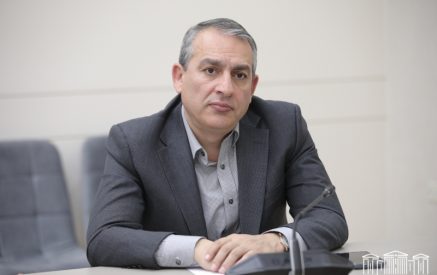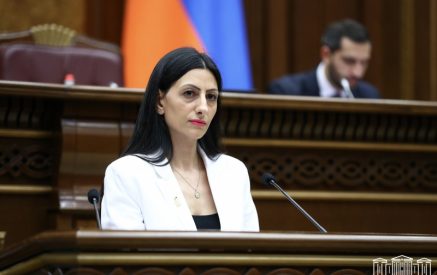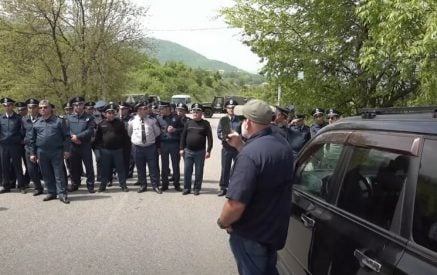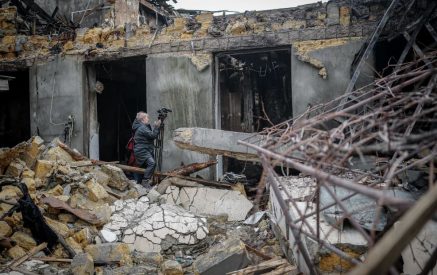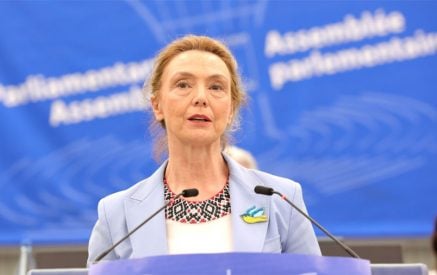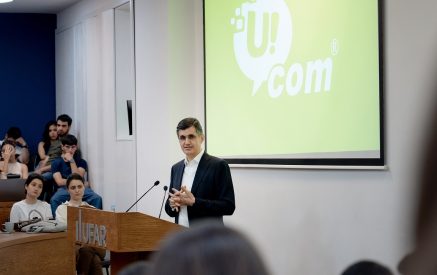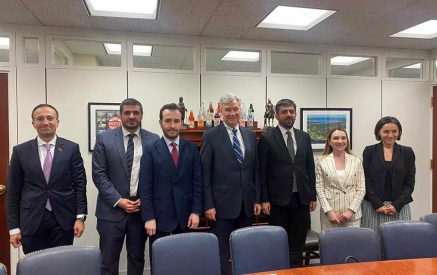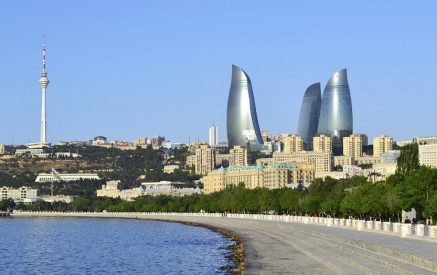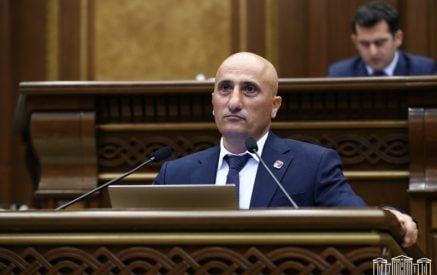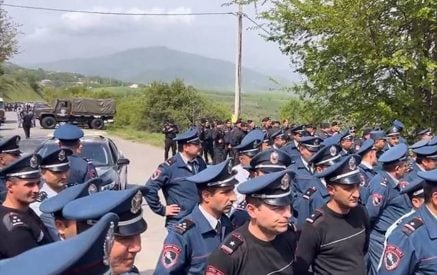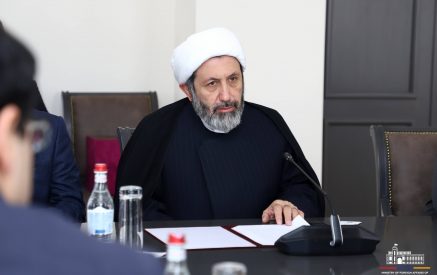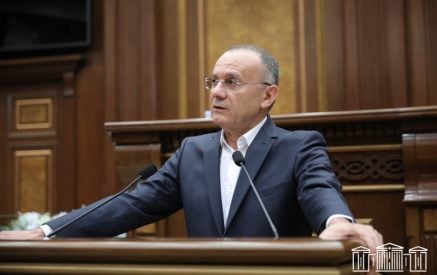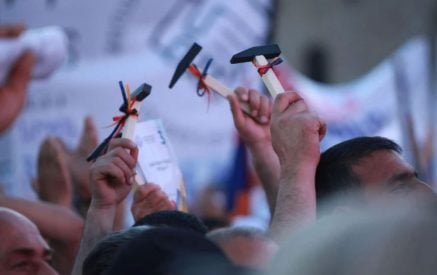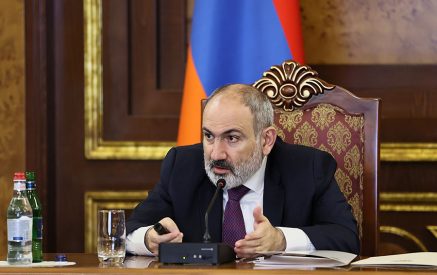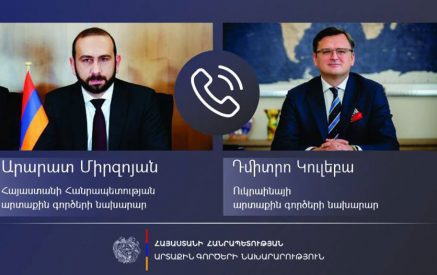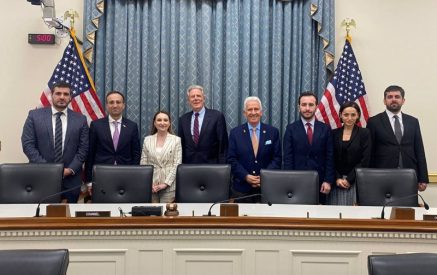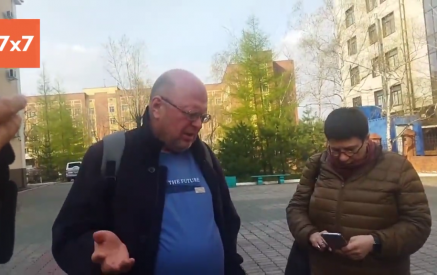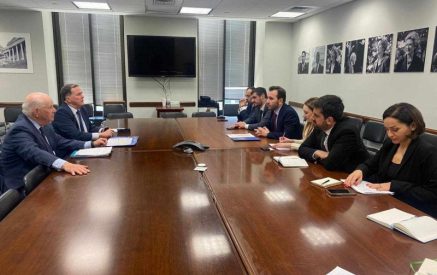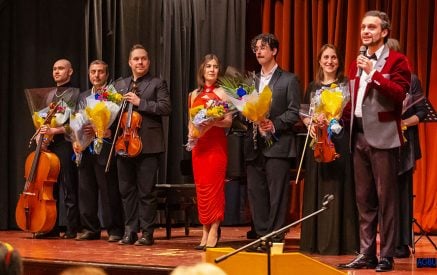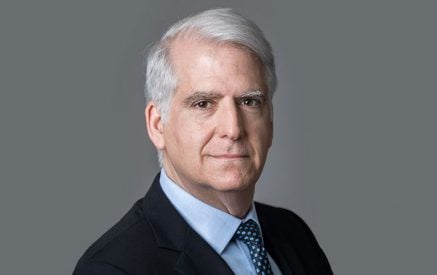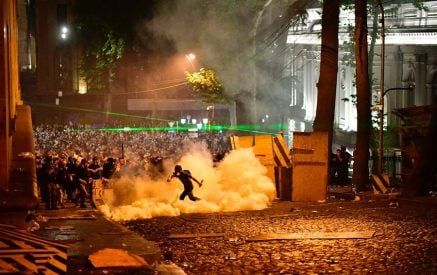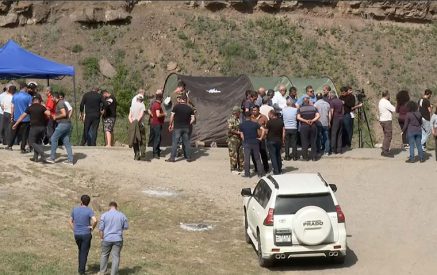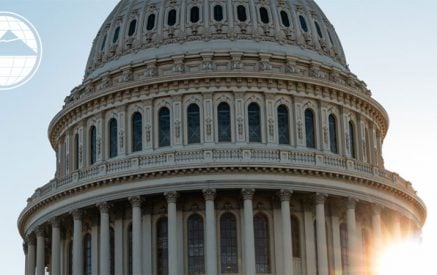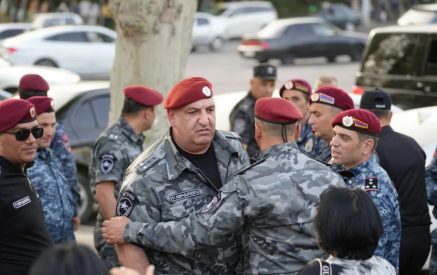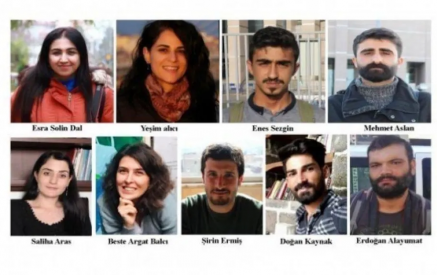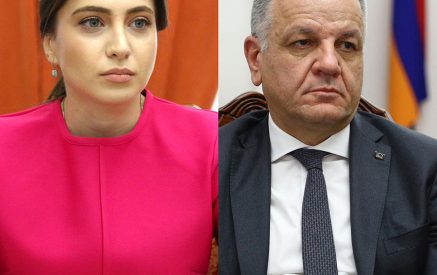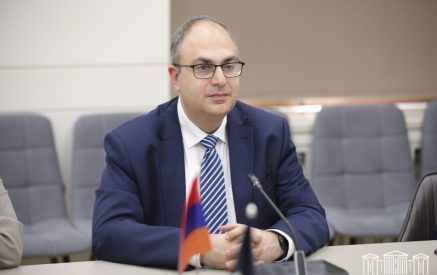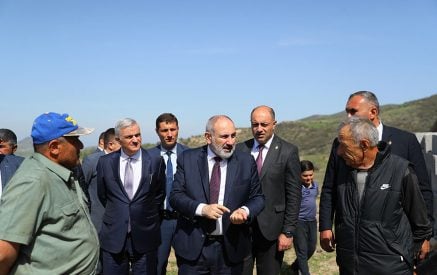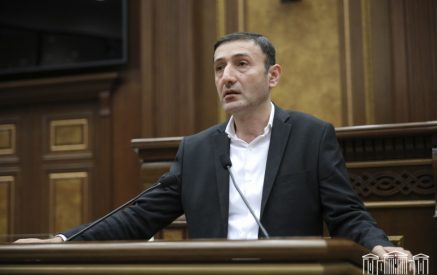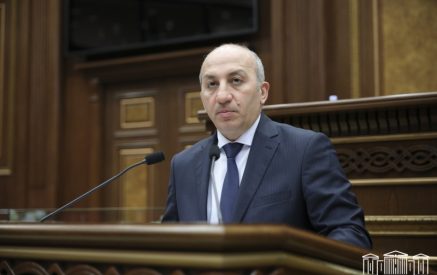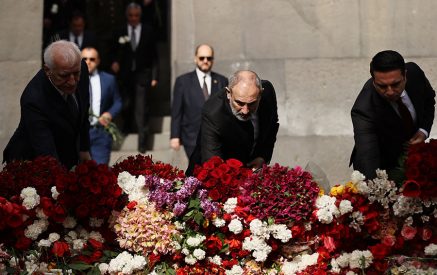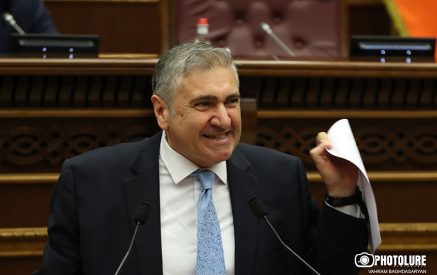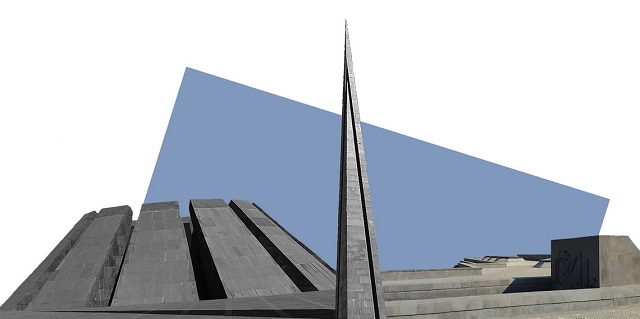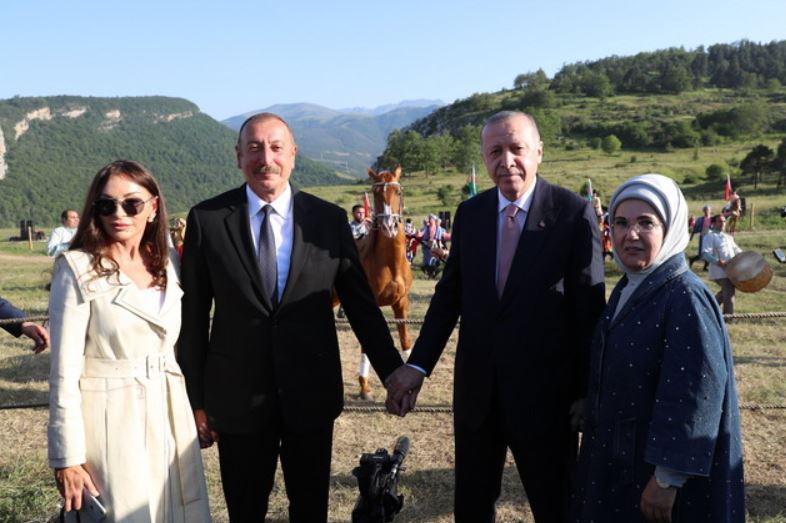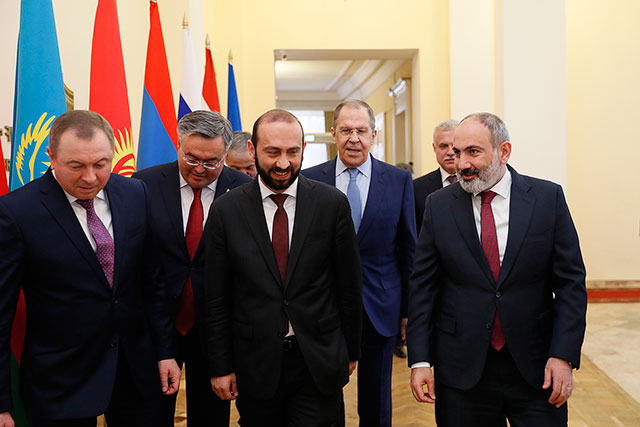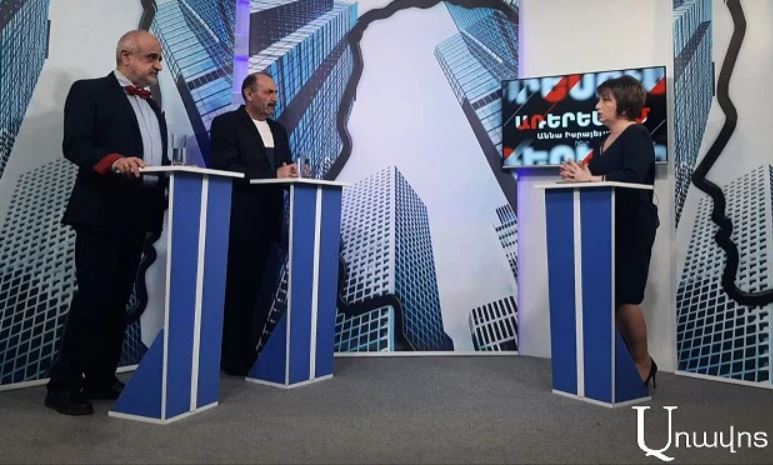A response to Prof. Stepan Astourian
Professor Astourian is a prominent historian, one of the best experts in the study of the Armenian Genocide, a professor at UC Berkley’s History Department and a member of the Scientific Council of the Armenian Genocide Museum-Institute (AGMI) Foundation. I found his recent article “Hybrid Warfare, a Pseudo-Scandal and the Armenian Genocide Museum-Institute” on EVN Report as evidence of his sympathetic attitude on occasion of the mass and social media campaign against the AGMI and its director, as well as AGMI Board of Trustees member Hranush Kharatyan. He accurately characterized it as a fake, manufactured scandal in the “hybrid war” against the Republic of Armenia and successfully scrutinized the phenomenon in a broader social and political context, with a valid historical assessment.
At the same time, Prof. Astourian’s publication includes several judgements and assertions, which I believe result from a lack of awareness, requiring additional clarifications. I also don’t share Prof. Astourian’s approaches to several issues, and I will try to briefly address those in this publication.
Read also
* * *
Prof. Astourian, most probably relying on the publications (and maybe also TV appearances) by Ani Voskanyan, a former employee of the AGMI, states that I have quite frequently used the term Medz Yeghern (“The Great Crime”) instead of “Armenian Genocide.” Let me convey right away that it is not the case. The history of the issue raised by Ani Voskanyan starts and ends with the following episode:
Back in 2002, Jansem (Hovhannes Semerdjian, 1920-2013), the well-known French-Armenian artist, donated to the AGMI his series of 32 paintings related to the Armenian Genocide, which was registered in the archives of the museum as a collection under the name of Yeghern. This is the actual fact. The then-incumbent director of AGMI Dr. Lavrenti Barseghyan immediately included these paintings in the permanent exhibition of the museum. In 2013-2014, when the preparations for a new exposition began, the paintings were removed to the stock room and since 2015 were not included in the permanent exhibition. Given the wishes of many citizens, as well as the mediation of the President of Armenia, a special exhibition hall was designated for Jansem’s paintings in the summer of 2019 and his 24 paintings are exhibited there to this day. Since the artist had handed over the collection to the museum under the title Yeghern, it was registered in the reserve collection with the same name. We have simply maintained the name of the collection, which preceded us, and we have named that particular section of the exposition as the “Painter of the Medz Yeghern.” Moreover, in the extensive Armenian, English, French and Russian notes “Armenian Genocide” is indicated in brackets next to the term Medz Yeghern. That’s it. Is it fair to extrapolate from this situation that I, as the director, often use the term Medz Yeghern instead of “Armenian Genocide”? Those putting forth such formulations most probably have some compulsive ideas, as Prof. Astourian explicitly notes in his article.
On this note, I would like to share two more comments. First, it should be noted that the memory of Ms. Ani Voskanyan and her supporters (and this is true also about the former AGMI Director Dr. Hayk Demoyan) is opportunistic. Why weren’t today’s “fake patriots” speaking about the “impermissibility”—or maybe they don’t recollect it?—of using the term “Yeghern” by Hayk Demoyan in a program-related article “On the Conceptual Approaches to the Organization of Events Dedicated to the Centenary of the Armenian Genocide,” or when Director Demoyan was delivering a presentation titled “Risks and challenges on the eve of 100th anniversary of the Medz Yeghern,” or at the opening of the temporary exhibition at the AGMI in December 2015, titled “Struggling for Life and Dignity: Self-Defense Battles in the Years of the Medz Yeghern” or as articulated many times in the permanent exhibition. Why? The answer, I believe, is that the memory of the critics of the use of “Medz Yeghern” in the 2019 Jansem exhibit is purposely selective.[1]
Secondly, the term “Medz Yeghern” is an indispensable part of the Armenian historical and cultural heritage, and it is widely used in academia, as well as in colloquial speech and media publications.[2] Thousands of research papers and popular articles were published during the past century (and they are still being published), using this particular term. This is the reality, and it is impossible to simply close one’s eyes to it.
In his publication, Prof. Astourian quotes one of my articles where I dwell on the scope of genocide. I avail myself of this opportunity to complete this section with a brief quote from another article of mine:
“In 1965, at the 50th anniversary of the Medz Yeghern, a new quality was introduced to the remembrance of Genocide—one may say that it became the property of the nation, as well as a driving factor for the Armenians, and with establishment of the Hay Dat committees and other organizations, it also became the channel to world recognition and firmly established itself in the Armenian identity. At the centenary of the Armenian Genocide, the memory of the “Armenian Genocide,” rather than the “Medz Yeghern” remains one of the key manifestations of the Armenian identity. This memory is one of the unique factors that brings together different political forces and has become not only a nation-preserving, but also a nation-creating factor.”[3]
* * *
Prof. Astourian thoroughly dwells on the issue of the dismissal of junior researcher Ani Voskanyan. Unfortunately, Prof. Astourian is not well-informed on this issue, either. As a matter of fact, Ani Voskanyan was contracted for a one-year period. When she signed the contract, she should have understood that she was not entering into a permanent employment agreement and that there was no guarantee that her role would be renewed beyond the specified one-year period. According to the Labor Code of Armenia (Article 95), the employer has the right to conclude an “employment contract with a specific term” by “identifying the completion date for the tasks specified in the employment contract.” Term employment contracts are concluded with “persons fulfilling secondary jobs” (95.3.2). When Mrs. Voskanyan undertook the employment contract with the AGMI, she was the Deputy Director of the Armenian Vordan Karmir carpet museum. The employment contract with the AGMI explicitly states her functions, including one key task of producing one memoir for publication. Ani Voskanyan failed to carry out this task. Therefore, even if her contract could have been extended, there would not have been sufficient grounds to justify such a decision. The grounds for termination of her employment, again, was the expiry of her contract, as provided for by Article 109 of the Labor Code. In such cases, Article 111 provides that “the employer may terminate the employment contract upon its expiry with written notification sent to the employee at least ten days before termination.” The fault of the management was that the notification was communicated to the employer six days before termination, for which Ani Voskanyan was compensated in the prescribed manner. Prof. Astourian raises the concern that other researchers might be at risk of being dismissed overnight. I would like to immediately console his concern, as no other research fellows are currently employed under a “term” contract; therefore, they are not under such risk. One must also note the silence from Ani Voskanyan and her supporters on the firing of many AGMI research fellows when the former director was in office.
Ani Voskanyan was fired during Dr. Demoyan’s term in office. According to oral statements, she was dismissed for failing to fulfill the job requirements but officially left “voluntarily,” based on her own written resignation.
Regarding the academic “harassment” of Ms. Voskanyan by the director, I have not received any written text from this research fellow during her employment at the AGMI, including about her disagreement with the title or agenda of the conference dedicated to Cilicia. Hence, the remark by the distinguished Professor that “Voskanyan had openly raised somewhat justified concerns about the content of the AGMI’s announcement of a conference entitled ‘Struggle for Armenian Cilicia: Cilicia and Cilician Armenians in the Aftermath of World War I (1918-1922)’” falls short. An email from Ms. Voskanyan was received only after the employment termination decision, to which I deemed it prudent not to respond. Yes, Ms. Voskanyan, after her dismissal, has requested that the members of the Scientific Council convene a session. Let me note, however, that there is a clear arrangement for regulating such cases: an extraordinary session of the Scientific Council shall be convened when such a request is furnished by at least one third of the members. Hence, it is not solely the director who is entitled to decide whether the session may be convened by the Scientific Council or not. None of the then-17 members of the Scientific Council (ten are staff members of the AGMI and seven are external members) have furnished a verbal or written request to convene such a session. Neither has Prof. Astourian.
In his deliberation on this topic, Prof. Astourian raises the question as to why the AGMI Director is also the chair of the AGMI Scientific Council and, thereby, the one who decides on convening the sessions of the Council.[4] He notes that this problem is common to Armenian academic institutions in general. Article 50 of the AGMI Charter, approved by Government Decree No. 1696-N of December 21, 2017, explicitly states: “The chair of the Scientific Council is ex-officio the Director of the Museum-Institute.” I was appointed to this position on October 4, 2018.
In his article, Prof. Astourian makes statements regarding the AGMI Scientific Council: “this Scientific Council exists only on paper,” “the Scientific Council exists only on paper; it is useless.” I have difficulty comprehending why the distinguished Professor gives such a characterization to the AGMI Scientific Council when he attended two sessions, one remotely and another in person. I hope he would agree that there was a free and open discussion.
* * *
Regarding the “I remember” motto, Prof. Astourian accurately noted that I had no intention of “getting rid of” the “and demand” clause. He rightly mentions that “It might have been simpler to state that this was just a caption for a day of remembrance, which was not meant to replace the national logo, and to apologize for the bad impression it had left.” In fact, that’s exactly what was done; three thorough explanations were posted on the AGMI’s Facebook Page and then, observing that a grave misunderstanding had occured, it was decided “to avoid any potential manipulations, to dispel our compatriots’ concerns and change the scope of the memorandum using the text of ‘I remember and demand’ motto proposed in the ‘Pan-Armenian declaration of the 100th anniversary of the Armenian Genocide’ adopted in 2015.” Then, again, the goal of the initiative was explained as follows: “Our main proposal and request to our compatriots remain the same—share the photos and stories of the victims and survivors of the Armenian Genocide on the Facebook Pages.”
Prof. Astourian reflects on my interview given at the Athens conference and mentions me having said that “the Armenian youth is alienated from the issue of the Armenian Genocide because it does not want to feel it belongs to a group of victims.” In fact, I have dwelt on this episode with a slightly different formulation, specifically “While there are not few young and middle-aged individuals who do not want to feel only as heirs of the victims,” I still hold this belief. There are Armenians with such a mindset not only in Armenia, but also in the diaspora. Yes, there were no measurements or social surveys on this with precise or approximate percentages. However, this phenomenon exists among “not few young and middle-aged individuals.” The grounds for this conclusion lie in the observations a number of colleagues and I have made over the years and once in a while discussed. I have come to this conclusion and written about it in my monograph dedicated to the Karabakh Movement remembrance of genocide, of which the distinguished Professor is well aware. Isn’t the motto “Sorrow is forever, if there is no struggle,” born during the Karabakh Movement, congruent with the ideas I have expressed? Moreover, the conclusion of my article “Overcoming the Genocide Victim Image in the Years of the Karabakh Movement,” published in 2013 in the “VEM” Pan-Armenian journal sponsored by the ARF, explicitly states the following: “Hence, during the years of the Karabakh Movement, the factor of the remembrance of the Armenian Genocide acquired the role of driver of revolutionary developments, whereby the Armenian society overcame the ‘complex of victimhood’ of the genocide preserved in the Soviet times. Genocide remembrance remains a crucial element of Armenian identity, where the image of a struggling man, rather than of a victim prevails.” [emphasis added]
Nowadays, after thirty years of the Movement, people from different social clusters (journalists, artists, pupils, students, parents, rich men, military men and others) have, on different occasions, spoken and are pronouncing the phenomenon I mentioned. I hear and read about this in mass media. An indirect manifestation, I believe, is the fact that school students and teachers visiting the Genocide Museum prefer hearing about forms of struggle, actions to punish the Young Turks, rather than about losses incurred in the years of the Armenian Genocide. With this and other similar factors in mind, I also speak of the differences between the methodology applied by historians and ethnographers. Does Prof. Astourian know of books authored by historians of documents created thereby about the developments in the mindset of the Armenian people? I don’t know of any. I don’t set the practice of a historian against that of the ethnographer; I simply note that they are different.
However, coming back to the question of “I remember and demand,” on the one hand, Prof. Astourian clearly indicates his conviction that I never aimed to abandon the “I demand” clause, but soon after poses the question “Who exactly has given a mandate to the AGMI Director to reshape the Armenian memory of the genocide?” There is a logical contradiction here: if I didn’t aim to abandon the “I demand” clause, why say that I have tried to reshape the Armenian memory of the genocide? Even if there were proposals to reshape, they focused on highlighting the struggle, with regard to which I have both scientific publications[5] and have touched upon this idea in a number of interviews.[6] There is another unjustified remark: “Once he agreed to be the director of a state institution, however, this [academic] freedom became constrained by the existing decisions of the state.” However, it is not quite clear what I have done, in Prof. Astourian’s opinion, to go against the “state policy,” if, as he observes, I haven’t tried to abandon the “and demand” clause. Meanwhile, in many open publications, even in the vision I submitted in my application for the Director position, I explicitly talked about the need to emphasize the topic of struggle in the memory of genocide. I fail to see how I contradicted state policy.
* * *
Prof. Astourian writes, “Dr. Marutyan concluded a lecture in Turkey, at the Hrant Dink Foundation, by appealing for funding help. Not exactly the right country for such an appeal and for appearing as a supplicant.” In my perception, this remark is inappropriate. Let me clarify. Back in November 2018, I received an invitation from the Hrant Dink Foundation to attend a conference in Istanbul that read: “In late March 2019, we will organize a two-day long international conference on the practices of dealing with the difficult pasts with a special focus on museums, memory sites and memorialization projects. With this conference, we would like to offer a platform to discuss the present and future of memory works and memorialization of the difficult and violent past.”
I didn’t turn down the invitation because I saw it as an opportunity to raise awareness of the AGMI’s upcoming activities. The presentation was entitled “The Armenian Genocide Memorial and Museum in the Post-Centenary Period.” In the final part of the presentation, I talked about the three large projects to be set up, indicating that the implementation will last for years: “Database of the Victims and Survivors of the Armenian Genocide,”[7] “Database of the Genocide Survivors’ Testimonies (Audio and Video)” and “Digital Database of Memoirs of the Armenian Genocide Survivors.”. Then, I said that “These projects can only be realized with the help of sufficient donations.” Does this sentence mean that I am asking for support or make me appear a supplicant? I was simply stating a fact. The conference was broadcast live and watched in various countries of the world. The audience, if interested, might have decided to contribute to the implementation of these projects. It is disingenuous, however, to extrapolate from the situation that I was seeking financial support from the Turkish government or public.
* * *
Regarding the social benefits package, as rightly mentioned by Prof. Astourian, “While the complaint was not targeted directly at Dr. Marutyan, it clearly expressed discontent.” Let me clarify. I, as the AGMI Director, sent several letters to the Ministry of Education, Science, Culture and Sport in 2019 to re-include the employees of the Museum-Institute in the social benefits package. The response was very clear: “The Ministry of Education and Science has planned to include the Armenian Genocide Museum-Institute Foundation in the list of beneficiaries of the social benefits package within the framework of the 2020-2022 mid-term expenditure plan and 2020 budget request.” The problem remained unresolved for some reason. Given the reality that the government of the country pays attention to requests from citizens which are addressed through the Internet, the question on behalf of the employees of the Museum-Institute was pronounced also on Facebook. Henceforth, the employees of the Museum-Institute linked the solution of the problem to its publicity, which, however, didn’t have a positive outcome.
* * *
Prof. Astourian has the right perception of the interview by the chief treasurer of the Museum-Institute Ms. Gohar Khanumyan, noting that I, in deciding to separate the library from the fonds, acted in accordance with established procedure, rather than arbitrarily, and received authorization from the evaluation commission, whose members are leading experts in the field. He indicates that Ms. Khanumyan’s concerns could have been first discussed by the Scientific Council or Board of Trustees, “instead of being leaked to the uninformed public and thereafter manipulated for political purposes.” The fact is that, at the session of the Scientific Council on March 30, 2019 (attended also by the distinguished Professor), the issue of “changes to be made in the structure of the funds of the AGMI Foundation” was discussed as a separate agenda item and reported on by Ms. Khanumyan. Members of the Board of Trustees were also aware of the problem, based on the letter I sent on January 16, 2019, which included also the “Main areas of activities of the AGMI Foundation in 2019” document, two points of which related to the issue under consideration. However, for some reason, Ms. Khanumyan changed her opinion over time and decided to share her “serious concerns” with the public, which as aptly noted by the Professor, found “fertile soil” among those targeting my reputation. In her interview, Ms. Khanumyan, presenting the groundless assumptions as “serious concerns” for potential “activation of the human subjectivity” that may happen in the future, did not speak of violations that existed for years. For instance, based on Demoyan’s verbal order, registration of museum objects and collections in the main logbook was terminated in 2017. Furthermore, registration of an item in the main logbook, as per various international conventions, gives legal status to the item, proving the fact that the item belongs to the Museum. Either the Museum didn’t have an evaluation commission for the reserve collection, which simply means that decisions related to registration and storage of the reserve collection were subjective, the procedures for registration, storage and maintenance of the reserve collection were missing, contracts on full material responsibility concluded with the employees of the reserve collection were missing, none of the museum’s items had a scientific passport, etc. These are infringements which have taken place for a decade, but the person raising the issue was again selective with her memory.
* * *
Let me reflect on another remark by Prof. Astourian, where he speaks about the “serious problems” existing at different levels of the senior management of the Museum-Institute (Director, Board of Trustees and Scientific Council), specifically when he indicated that “There is no sense of devoir de réserve and no discipline internally at the AGMI.” It is interesting, based on what information Prof. Astourian arrived at the conclusion that there is no “internal discipline” in the Museum? Would there be such problems, how come that the Museum-Institute had multiple achievements in 2019, such as, resuming the publication of the “Tseghaspanagitakan Handes” (“Journal of Genocide Studies”) and the “International Journal of Armenian Genocide Studies,” organizing international conference with support from benefactors, participation of fellow researchers in two dozen international conferences, organizing summer school for the teachers, lecture-seminars for school student groups, holding a series of methodological workshops, setting up library days for the research fellows, organizing six temporary expositions, one of which – in collaboration with Austrian side, unprecedented increase in visits of the Museum-Institute website, substantial expansion of the German language archives and many more. I believe in this regard the distinguished Professor was briefed unilaterally.
* * *
And finally, we thank Prof. Astourian, a scholar concerned with the reputation and image of the AGMI, for his reflection and honest coverage of the superfluous manipulations regarding the museum.
Harutyun Marutyan
Director of the Armenian Genocide Museum-Institute

